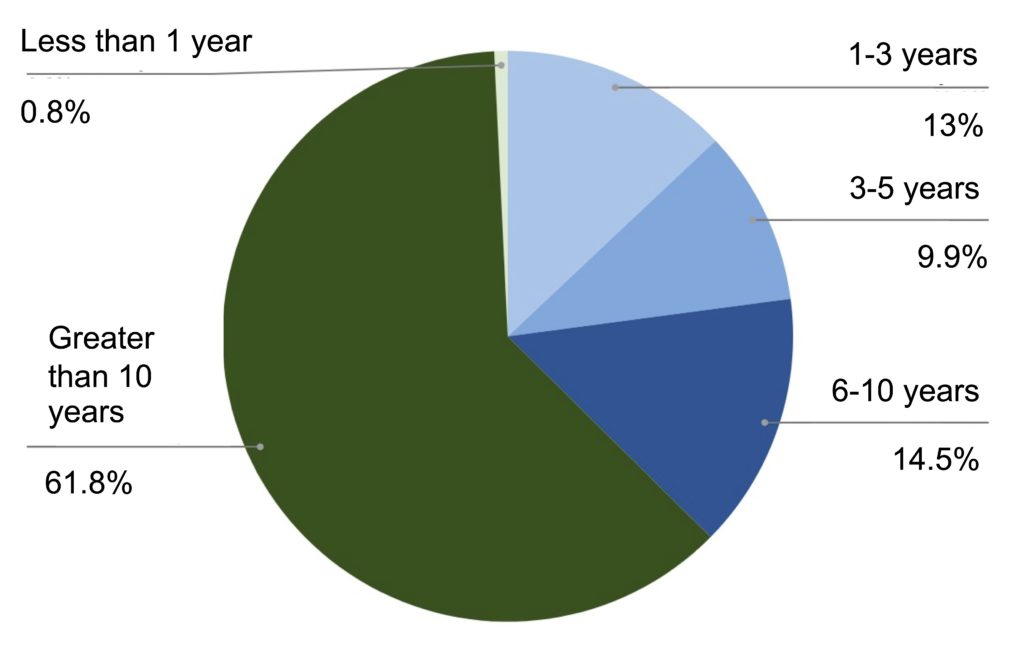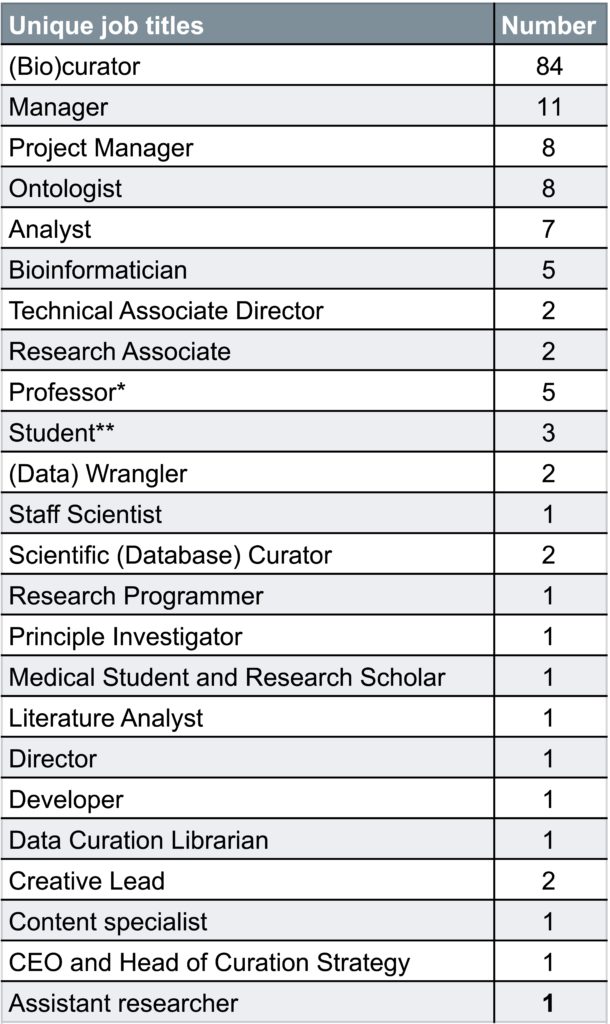By Nicole Vasilevsky
At the third session of the Virtual Biocuration Conference on August 17, 2021, Sushma Naithani, Associate Professor Senior Research & Lead Biocurator for Plant Reactome at Oregon State University led a Workshop on Addressing Implicit or Unconscious Bias organized by the Equity, Diversity, and Inclusion (EDI) committee of the International Society for Biocuration (ISB). Three invited panelists joined the discussion: Laurie Goodman, Publishing Director, GigaScience Press, Yasmin Alam-Faruque, Senior Biocurator at Healx, and Varsha Khodiyar, Data Curation Manager at Springer Nature. The session recording is available here.

The discussion started with a recap of Picture A Scientist, a documentary film that was screened by the ISB EDI in March 2021 (and is currently available on Netflix).
Impact of ‘Picture A Scientist’
Picture of Scientist is a documentary that follows three women in different scientific careers: Jane Willenbring, a geologist who faced unrelenting harassment during a once-in-a-lifetime opportunity performing fieldwork in Antarctica; Nancy Hopkins, a biologist who documented concrete evidence of discrimination against women in allocating lab space at her institution, and Raychelle Burks, a chemist who has to contend with a hostile work environment as she progressed through her career. The primary consensus from our panel in response to the movie was a feeling of empathy, commiseration, and a recognition that we still need to fight for equity for women in science.
Our panelists called for the need to do more to recognize and acknowledge gender discrimination as well as other forms of unconscious biases that persist in the scientific field. They recognized unique challenges for women, people of color, immigrant scientists, etc. Opportunities to progress in science, particularly in academia, can be very limited without a Ph.D. If someone experiences issues in their lab during their early-career training, it can be really difficult to start over. In addition, training can be very specialized and limited. They called out the need for better strategies to aid scientists-in-training and junior scientists when their progress is impeded. These kinds of challenges may not exist in other male-dominated fields like law, where there are opportunities to move between firms.
For those who are dependent on employment visas from immigration offices, they may feel less empowered to take action or speak up when their immigration status is linked to their employment. In addition, the need for recommendations from previous employers may impact our sense of empowerment to take action against inappropriate workplace situations. We all need to stand up and take action when we see discrimination and inappropriate actions. We need to be allies and support each other. However, the problem with implicit bias is that many well-intentioned folks are not aware of their own biases and how it contributes to the environment of scientific institutions, fraternities and societies. Thus, we also need clear institutional guidelines, support for training the scientist in soft skills, and addressing the implicit bias for resolving the issues related to EDI.
Our panelists brainstormed some strategies and mechanisms to address some of these problems.
- Education and training
- Regular education and training sessions, such as unconscious bias training are helpful to provide the most up-to-date information.
- Tests are available that can give insight on your own potential implicit biases, such as https://implicit.harvard.edu/implicit/takeatest.html
- Institutions have the responsibility opportunity to aid in reporting of harassment and discrimination
- Most institutions over a certain size have a Human Resources (HR) department and mechanisms to report harassment or inequity.
- For example, the company Healx conducts regular surveys to understand employee engagement and satisfaction in the workplace. The survey includes questions around equity, diversity, and inclusion, and provides a platform for employees to anonymously report any inequality/harassment issues they may have encountered.
- When new students and employees are onboarded, they should be informed about processes for reporting issues to HR.
- Mentorship
- Money talks: if women are awarded large grants earlier in their career, this may significantly help their career trajectory.
- More established biocurators have the opportunity to help train women on how to write good grants.
- Including women and other scientists, who are marginalized, in formal and informal collaborations, and various professional groups will help to achieve inclusion and diversity of the STEM.
- Defund offenders
- Institutions and funding agencies should implement policies to take away positions and/or grant funding from people who are guilty of harassment or discrimination.
Opportunity for the ISB: Define our job titles
The panelists pointed out that standardization of job titles could help with career progression. The ISB has an opportunity to help define standardized job titles across the ranks. For example, what does a starting position look like, and what qualifications does a more advanced biocurator typically have? What is the difference between a Lead Biocurator and a Senior Biocurator? Our recent survey revealed that the majority of respondents (62%) have been in their position for 10 years or more, but only about half (49.6%) of the biocurators who responded have been promoted since they started their career in biocuration.

Job titles for biocurators vary widely and there is a lack of standardized names and titles for the biocuration positions. The field of biocuration has existed for approximately 20 years, yet there is not a widespread understanding of what a biocurator does and what a typical career progression should look like.
Based on results from a recent survey that was conducted by the EDI Subcommittee, ISB community members reported 24 unique job titles as outlined in the table below. Of note, most respondents identified as (bio)curators, but some respondents distinguished their title as a Scientific curator or Scientific Database curator, emphasizing the need for standardization of the job titles.

A generic biocuration position description is available on the ISB website here, which was created as an outcome of the Careers in Biocuration Workshop at the Biocuration 2018 conference in Shanghai, China. This could be used as a starting point for further definitions and standardization of position descriptions.
We need better data
As scientists, we recognize the need for concrete data and evidence to back up assertions and stimulate change. There is a call for the ISB to collect data from the biocuration community to address key questions such as:
- Are women being paid less than men?
- What is the gender breakdown of the membership of the ISB?
- What percentage of women obtain grant funding compared to men?
- Is there evidence of gender or racial discrimination in the biocuration community?
- Are biocurators progressing in their career at the same rate as other types of scientists?
A previously published report on ‘Gender Balance at the International Society for Biocuration Annual Conferences’ is available here (https://zenodo.org/record/3541014#.YUpRJtNKh59).
Conclusion
The EDI Subcommittee was formed as an outcome of the inaugural Equity, Diversity, and Inclusion workshop at the last in-person Biocuration conference in Cambridge, UK in 2019. This is a volunteer-run committee with members from the ISB Executive Committee and community members. Anyone is welcome to join and all contributions are valued and appreciated. We are extremely grateful to the workshop organizers, Sushma Naithani for moderating this session, and a huge thanks to our panelists, Laurie Goodman, Yasmin Alam-Faruque, and Varsha Khodiyar for their insightful perspectives and for assisting us in thinking about these important issues.
More Information
Join us: Email us at: intosocbio@gmail.com to inquire about joining the EDI Subcommittee
Equity, Diversity, and Inclusion Subcommittee website: https://www.biocuration.org/equity-diversity-and-inclusion-committee/
Slack: https://isbedicommittee.slack.com/archives/CKENH257H
